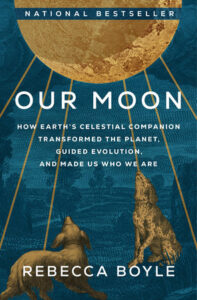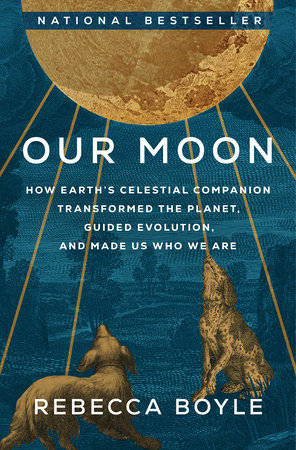Earth’s closest celestial neighbor comes to light in Our Moon
Understanding our lunar sister better
Understanding our lunar sister better
Did you know that there is no sound on the moon? You could stub your toe on a random colorless rock, thrash about s..l..o..w..l..y — gravity on the moon is one-sixth of what we experience here on earth — and yell, no, scream all those bad, fun words and there would be, well, silence.
That’s if you could actually breathe on the moon, which you can’t because the oxygen on the moon is compressed in the rock your toe hit. In all likelihood you’d have a spacesuit on, and those nice people at NASA would hear your expletives, roll their eyes and try their darnedest not to laugh. Because you tripped, on a rock, on the moon. (It’s happened to all of the astronauts who’ve walked in lunar dust apparently). Gravity, or lack thereof on the moon, skews the senses. It’s actually very challenging to walk on the surface of the gray-space; the horizon, ever-moving, toys with one’s equilibrium.

Rebecca Boyle
Colorado Springs-based journalist Rebecca Boyle takes on our closest celestial neighbor with style, imagination and broad knowledge in her bestselling book, Our Moon: How Earth’s Celestial Companion Transformed the Planet, Guided Evolution and Made Us Who We Are. An award-winning science journalist, Boyle is a contributing editor at Scientific American, contributing writer at The New York Times and frequent contributor to many other national publications.
In Our Moon, Boyle explores the moon’s origin, the alluring moodiness it beams down upon us and the fact that without it we wouldn’t be here. We learn how Earth and its moon were (more than likely) created as she easily breaks down four billion years of astronomical happenings and events, introducing us to violent and messy, lesser-known concepts such as Earth 1.0, Synestia and Theia. Think rivers of lava, searing winds and a soy sauce muck. Somehow, in all that brutal chaos, life took hold and the initial beginnings of Earth and Moon developed together, creating a unique symbiotic pairing in our universe.
Here’s something to ponder: the moon revolves, just like Earth, but due to some quirky astronomical physics thingy, (the author explains why) we only see the same side of the moon, always. Mind blown on that one.
The relationship we have with the great shining orb in the sky is incredibly complex. Boyle’s Our Moon gives us captivating lessons in ancient archaeological history and how ancestors from eons ago revered the planetoid, creating impossibly precise monuments that pay homage to both the moon and sun. We gain a mighty perspective of just how much Earth’s moon has influenced our theologies, culture and scientific disciplines and how that impact continues today.
People have used the moon (and sun) as clock and calendar from practically day one. Somehow, despite what we think of our Neanderthal brethren, they created a very sophisticated system to track the moon’s movement. The book’s in-depth review of how timekeeping and calendars came about and evolved, then took shape through the ages, is fascinating.
The absolute excitement and fascination Boyle has for the moon is evident, so much so that it’s infectious for the reader. She brings to the page an uncanny ability to break down vast scientific concepts into easy-to-understand bits, and to bring history alive with a wry sense of humor and engaging writing. Our Moon will give any reader a much deeper appreciation and understanding of our lunar sister.
Jeffery Payne has been a bookseller for over 40 years. Currently living and working in downtown Colorado Springs, he is incredibly grateful that he gets to do what he loves to do. When not shelving books he can be found tending his garden and working out ways to sneak more books into the house.
Click here for more from Jeffery Payne.

